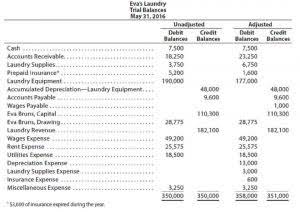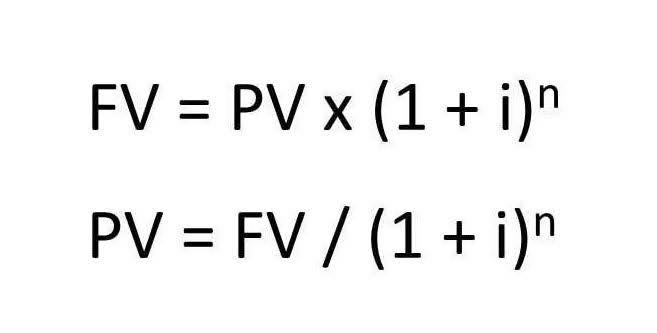
To do so, you would debit obsolete inventory expense for $7,000 and credit the inventory obsolescence reserve for the same amount. You get the $7,000 figure by taking $700 for Product A and multiplying by the 10 units on hand. An inventory write-off is https://www.bookstime.com/articles/music-industry-accounting an accounting term for the formal recognition of a portion of a company’s inventory that no longer has value. It can be expensed directly to the cost of goods sold (COGS) account or it can offset the inventory asset account in a contra asset account.

How Does Obsolete Inventory Affect the Income Statement?
The LCM rule states that the inventory carrying balance recorded must reflect the lesser value of the original cost or current market value. In financial accounting, an inventory write-down becomes necessary if the market value of a company’s inventory drops below the recorded carrying value on the balance sheet. The journal entry to record the inventory write-off would be a debit entry of $100k to the “Inventory Write-Off Expense” account and a $100k credit entry to the “Inventory” account. The inventory account will be credited and the inventory reserve account will be debited to reduce both when the asset is disposed of. This is useful in preserving the historical cost in the original inventory account. The company has to record the inventory of obsolete $ 40,000 on income statement.
Disposal of Obsolete Inventory
Once the anticipated write-off occurs and the process of removing the inventory value from the books (and disposal) is complete, the loss is charged against the reserve account. If the write-off amount is immaterial and not a recurring event for the company, the cost of goods sold (COGS) account can be the expense account debited. By writing off obsolete or unsellable inventory, the financial statements are presented with a higher degree obsolete inventory journal entry of transparency, causing them to be more reliable. The conservatism principle, one of the core concepts underpinning the reporting standards under accrual accounting, mandates companies to record the carrying value of certain assets at their fair value. After you identify the obsolete inventory, you next determine the disposition price. For an outdated cellphone, maybe you drop the price by a third to attract bargain hunters.
What is Inventory Write-Down?
If the inventory market value increased to $140k, rather than declining to $100k, the higher value would not be recognized per the lower of cost or market (LCM) guidelines. The current market value of the inventory, or replacement cost, cannot exceed the net realizable value (NRV), nor the NRV adjusted by a normal profit margin. Under IFRS accounting standards, on the other hand, the write-down equals the difference between the historical value and net realizable value (NRV). Inventory is reported on the balance sheet at its historical cost, however, reductions are often necessary based on the lower-of-cost-or-market (LCM) rule.
- Another ratio we can calculate and analyze as part of our slow-moving and obsolete inventory analysis is the Inventory Turnover.
- Though there are several great inventory forecasting solutions on the market, you can always rely on a 3PL to provide the insights you need to better forecast demand without the extra cost.
- As another example, Milagro Corporation sets aside an obsolescence reserve of $25,000 for obsolete roasters.
- Ecommerce merchants can now leverage ShipBob’s WMS (the same one that powers ShipBob’s global fulfillment network) to streamline in-house inventory management and fulfillment.
- The write-down reduces the carrying amount of inventory to its net realizable value which impacts the total asset value reported.
- Obsolete inventory is a term that refers to inventory that is at the end of its product life cycle.
We write-down when the realizable value falls under the cost at which we have recorded Inventory. And as soon as the stock has no value and we plan to take it off our records, we have to write it off. As we start to perform a regular Slow-moving and Obsolete Inventory analysis, it is crucial to look at past periods’ performance and analyze the trends in the ratios we focus on.

What Is an Inventory Write-Off?
It is one of the most important assets of a business operation, as it accounts for a huge percentage of a sales company’s revenues. Real-time access to data across the supply chain is beneficial for real-time inventory management. This gives you the most current information about inventory levels along with other details, such as warehouse receiving and production time lines.

Inventory Write-Off vs. Write-Down: What is the Difference?
Generally accepted accounting principles require that companies periodically examine their inventory balance for inventory that is no longer able to be sold for as much as the company paid for the goods. Understanding how to account for obsolete inventory in accordance with GAAP can help you make sure that your financial statements are properly presented and your books are in order. We can make the journal entry for disposal of the obsolete inventory by debiting the loss on inventory disposal account and crediting the inventory account. The inventory’s $1,500 net value less the $800 in sales proceeds resulted in an extra $700 loss on disposal, which was recorded in the COGS account. Investors should be cautious if there is a significant amount of outmoded goods.
- In this case, you will be discarding the product, so you will need remove the inventory from the company’s books.
- For instance, conducting regular inventory audits can quickly identify obsolete inventory before it eats away at your profits.
- Inventory purchases are made by the business and are listed on the balance sheet.
- Inventory is reported on the balance sheet at its historical cost, however, reductions are often necessary based on the lower-of-cost-or-market (LCM) rule.
- A contra asset account is reported on the balance sheet immediately below the asset account to which it relates, and it reduces the net reported value of the asset account.
- Actually, we can record the $500 into the cost of goods sold directly without the need to write down the value of inventory first if the value is considered a small amount or immaterial.
We can organize sales events and promotions to try and raise customers’ interest in the product. Remember that your ERP or accounting software might have a more complicated process in place, but the operations’ essence will be the same. Also, make sure you confirm the process with your local tax authorities, as there may be some requirements or limitations. But we can also calculate the Inventory Turnover for materials by replacing Sales with Consumption in Production. We would then look at MOH’s trend over time, compare it with lead times, and adjust our purchasing strategy as necessary. It is essential to consider any possible seasonality for the business, as it will heavily impact our analysis.